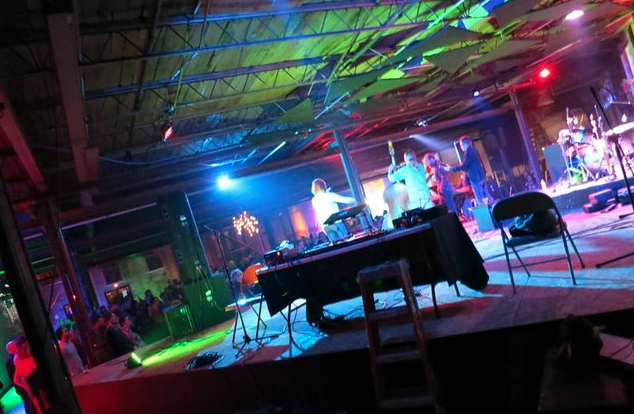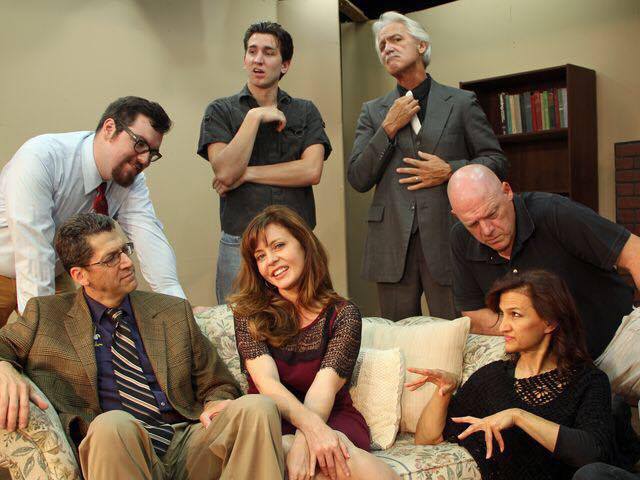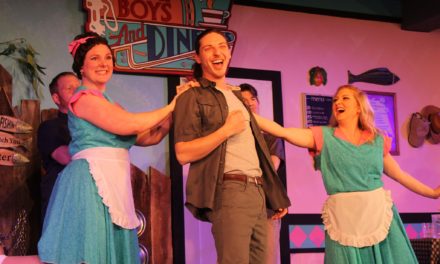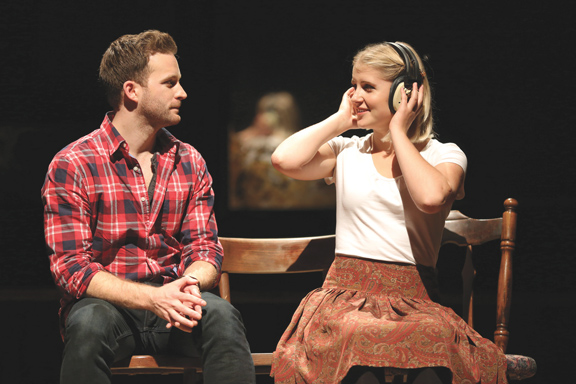During a music event on March 18, one person was killed and five others wounded by a currently unidentified shooter
at the Tim Faulkner Gallery.
Opinion by Allie Keel
Entire contents copyright © 2017 Allie Keel. All rights reserved.
When news started leaking out early Sunday morning about a shooting at the Tim Faulkner Gallery (TFG), it punched me in the gut.
My response was shared by a great number of people in various corners of the Louisville arts scene, and while I honor every person’s individual sense of outrage and betrayal, I feel I’d be remiss if I didn’t also take a moment to examine how the tragedy illustrates an ongoing division in our arts community.
From its beginning, the current iteration of the Tim Faulkner Gallery was in some ways an attempt to address and attack the racial divide in Louisville. Really, the whole Portland initiative is in many ways an attempt to reunite our city.
The first time I walked into the new TFG, it was just a few months after they’d opened their doors. I was there to write about McQuixote Books and Coffee for another local publication, but I ended up touring the whole facility.
I was immediately struck by the potential of the place. As a life-long actor, artist, and writer, there is no space more sacred to me than a theatre or an art gallery, and the new TFG aimed to be all those things.
I immediately pitched my editor another article, focusing in on the new location, its sense of promise, and what it could mean to the neighborhood, and the city.
From then on, I was a believer in the space, interacting with it in every way possible – as a journalist, an artist, and a promoter. Hell, I’m scheduled to perform there next month.
But many white artists and performers know that while the space is wonderful, scheduling an event there is going to involve convincing other white people that it is safe to cross the 9th Street divide. As always, the young, the hip, and the artists take a lot less convincing. But another reality is that if we are going to ever make enough money to quit our day jobs, we also have to lure the more financially stable people to our events, the folks from the richer parts of the Highlands, Crescent Hill, and the East End. The money end of art is always ugly, but rent don’t pay itself.
For someone who grew up in Old Louisville, this is an old struggle. Whether I was trying to get people to show up for plays at The Rudyard Kipling, or praising the virtues of a restaurant like The Third Avenue Café, some people were concerned about “a certain element” in the neighborhood.
Downtown and the Kentucky Center for the Arts faced a similar fight in the 1980’s, as did Butchertown and Nulu just a few years ago.
Slowly, the artists from the east side of the 9th Street divide have been convincing their friends, neighbors, and family members that Portland is safe. I don’t have numbers but I suspect that attendance at events as well as the overall number of events has grown steadily since the new TFG opened. We had convinced a growing number of people to give Portland a chance.
At the same time, Black artists were discovering the space, and starting to book events and shows. It became possible to see events at TFG segregating into – for lack of a better term – “White” events and “Black” events. For instance, the audiences for hip-hop shows are very different than the audience for an opening in the art gallery.
Of course there are people who cross that divide, but I’ve been to plenty of events that were almost completely racially homogenous.
Even so, the gallery had succeeded in crossing the 9th street divide, bringing Black Louisville and White Louisville to the same building. Even if it wasn’t on the same night, it was still progress.
The ubiquity of social media allows us the eerie perspective of watching the emotions and reactions of a great many people play out in real time. As a journalist who covers the West Louisville arts scene, the East Louisville arts scene, and those active in social justice, those real time social media reactions illustrated a stark difference between Black and White response.
I saw a great number of my White Facebook friends and fellow artists responding to the violation of their sacred space, and voicing concern for the future of the gallery.
The future of the gallery refers to our fear that the folks we have worked so hard to bring to the beautiful space will see this shooting as a confirmation of their fears, and never come back to Portland.
This is a reasonable feeling. We were building something wonderful, made of art and hope, and it was pierced by gunfire; shattered by violence.
But for my Black friends, the reaction was different. At first they were responding to the active and ongoing violence in their neighborhood. Then when the name of the victim who had died was released, they started grieving for their friend and family member. Some folks posted pictures of themselves with the deceased; others shared the last conversation they had with her.
Even those White people who did talk about the victims of the shooting, did it in a hypothetical way, the same way we might send prayers to the victims of a mass shooting in Sandy Hook, or at a University.
Any death is tragic, but the victim in this shooting was a young student, who showed great promise, and clearly had an impact on the lives she touched. Her name was Savannah Jeanne Walker.
At the top of Maslow’s Hierarchy of Needs is self-actualization. To me, art is the greatest example of what humans are capable of when they self actualize – the find their truest selves. Maybe it’s as an artist, or maybe it’s as someone who experiences art. Either way, creating ennobles our souls.
Down near the bottom of Maslow’s Hierarchy of Needs is safety. It’s right above the need for things like food and water.
Maslow’s Hierarchy doesn’t quite capture the difference between the responses of White and Black Louisville – our lives are too complex, but it comes close.
My white friends are worried about art, their ability to create or see art, and possibly their concept of who is safe in their city. I freely admit that those emotions echo my own.
But my Black friends are worried about their safety, and the safety of their loved ones. This is an ongoing fear, created by the string of murders in West Louisville, violence that, until the Tim Faulkner shooting, felt very far away from many of us on the east side of town.
My point isn’t to shame anyone, or say that any of the above feelings are wrong. It’s not a competition. I’m not saying people searching for self-actualization are wrong to do so.
But this moment, when the attention of both sides of Louisville is drawn to the same space, allows us a seminal chance to look and reflect – if we can do so without becoming angry or defensive.
Everyone should be free and safe to search for their truest selves. But this moment shows us that some of us are much freer to do so than others, and it’s time we all started talking about that.
Allie Keel is a Louisville based playwright, poet, storyteller, and freelance journalist. They have been published in Word Hotel, their plays have been produced by Theatre [502] and Derby City Playwrights, and they were invited to read their work at the 2014 Writer’s Block. They are frequent contributor to LEO Weekly and Insider Louisville, where they have been given the (informal) title of “Chief of the Bureau of Quirk.”





